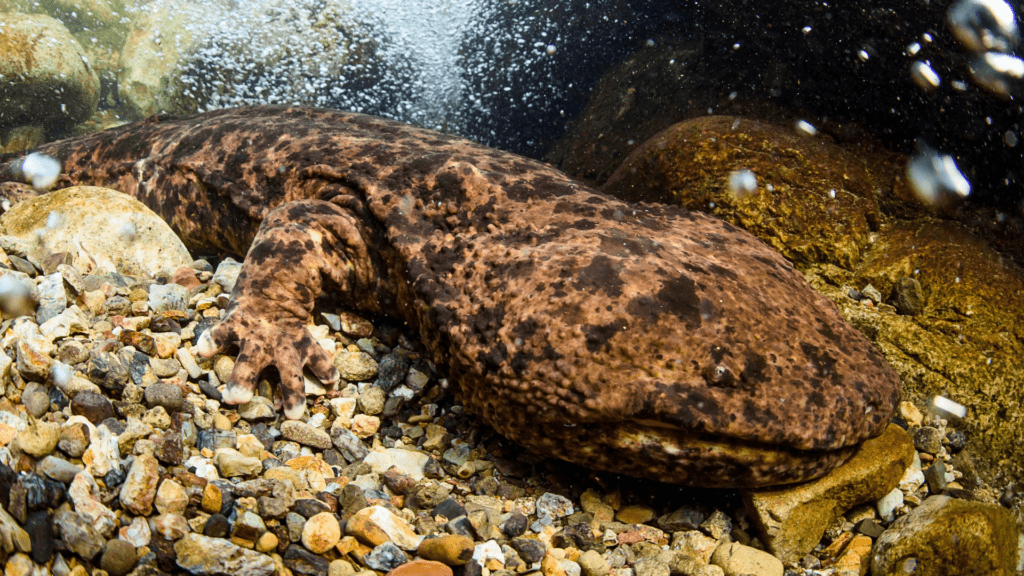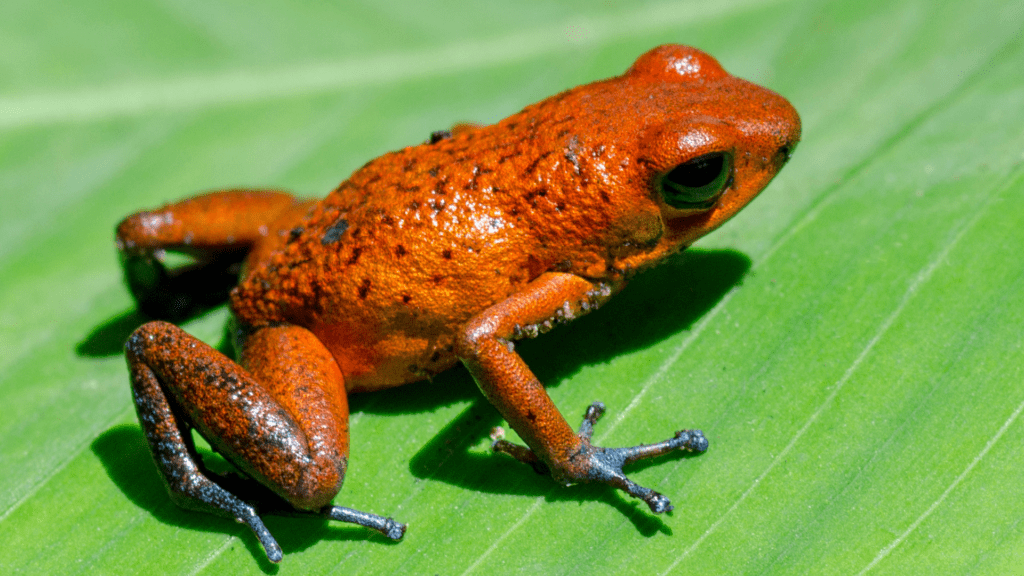Spring Peepers are small yet fascinating tree frogs known for their distinctive sleigh-bell-like calls that herald the arrival of spring. These tiny amphibians are often difficult to spot due to their excellent camouflage, blending seamlessly into wooded areas and marshy lowlands of eastern USA and Canada.
Scientific Classification
Kingdom: Animalia
Phylum: Chordata
Class: Amphibia
Order: Anura
Family: Hylidae
Genus: Pseudacris
Scientific Name: Pseudacris crucifer

Spring Peepers Physical Characteristics
Spring Peepers are easily recognizable by the dark “X” shape on their backs, which gives them their scientific name “crucifer,” meaning “cross-bearer” in Latin.
Color:
They range from tan, gray, olive green, yellowish, to brown. Males tend to have a darker throat than females.
Size:
These frogs measure only 1-1.5 inches in length and weigh around 3.1-5.1 grams. Males are generally smaller than females.
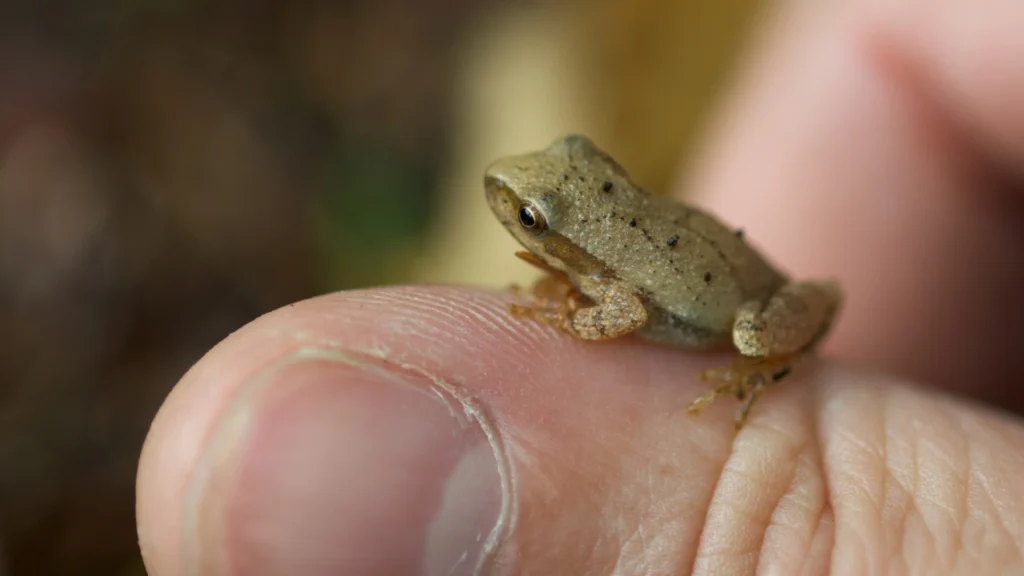
Toe Pads:
Their large toe pads allow them to climb trees, grasses, and small shrubs with ease.
Distinctive Call
The name “Spring Peeper” is derived from their high-pitched call, which resembles the chirping of young chicks but is much louder. Only males produce this sound, using their vocal sac located near the throat. This sac expands and contracts like a balloon to generate the signature peeping sound that attracts females during mating season.
Spring Peepers Habitat and Distribution
Spring Peepers thrive in woodlands, swamps, and areas close to ephemeral and semi-permanent ponds, which provide essential breeding grounds. These frogs are incredibly resilient to extreme cold, enduring temperatures as low as -8°C. They hibernate under logs or loose tree bark to survive harsh winters.
- Northern Spring Peeper (P.c. crucifer): Found across eastern USA and Canada.
- Southern Spring Peeper (P.c. bartramania): Found in southern Georgia and northern Florida, identifiable by a dark marking on their belly.
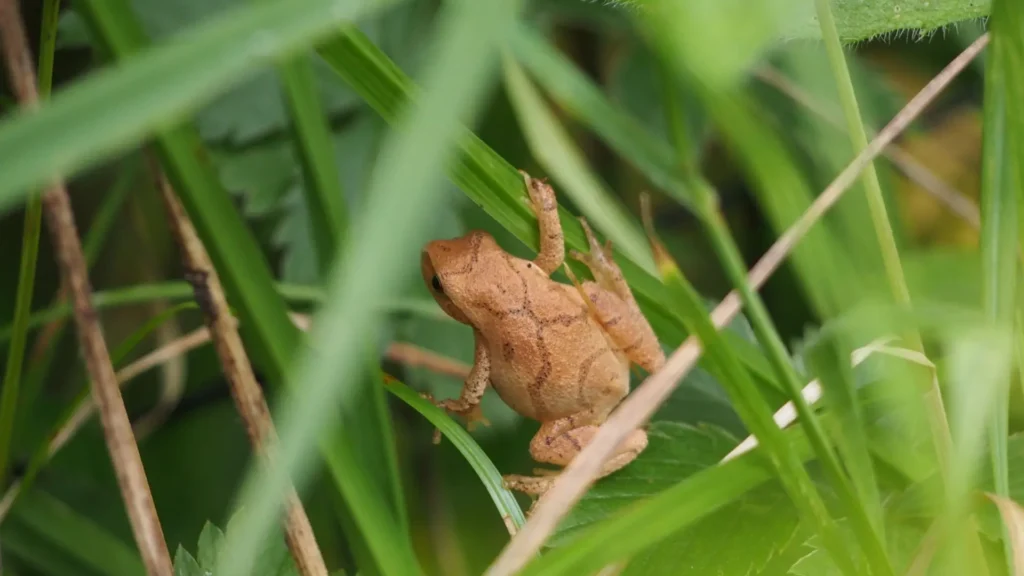

Spring Peepers Diet and Feeding Habits
Spring Peepers are nocturnal carnivores that feed primarily on small invertebrates, including:
- Ants
- Flies
- Beetles
- Spiders
During their larval stage, tadpoles consume water organisms such as algae, bacteria, fungi, and zooplankton.
Spring Peepers Reproduction and Life Cycle
The breeding season varies by region:
- Southern populations: October to March
- Northern populations: March to June
Males attract females with their calls, and upon selection, mating occurs with the male clasping onto the female’s back. The female lays 800-1000 brown eggs, either individually or in clusters, in ponds or tree hollows filled with water.
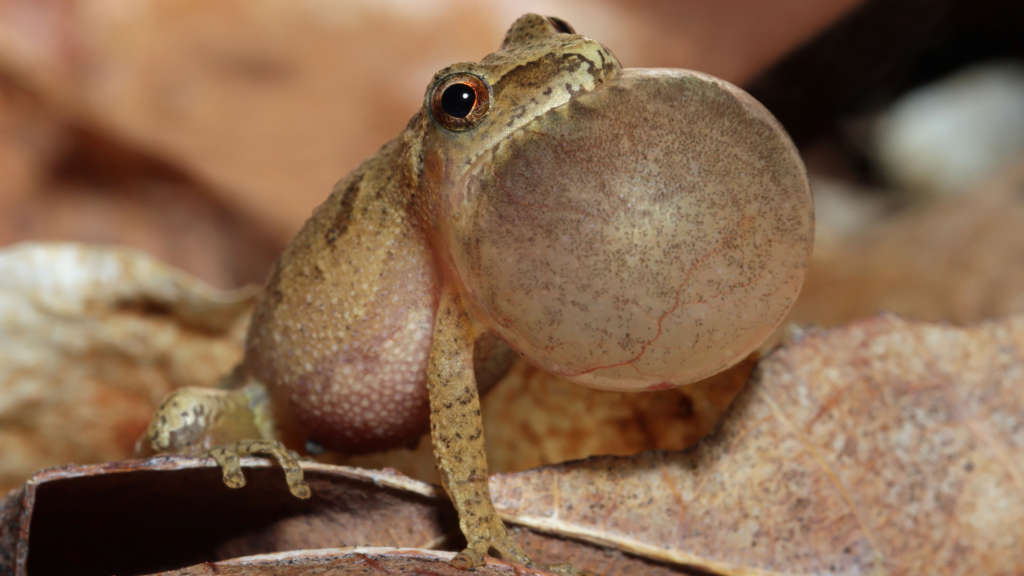
- Eggs hatch within 6-12 days.
- Tadpoles remain aquatic for 45-100 days, depending on environmental conditions.
- Once metamorphosed, juveniles disperse into swamp woodlands.
- Life expectancy is around 3 years
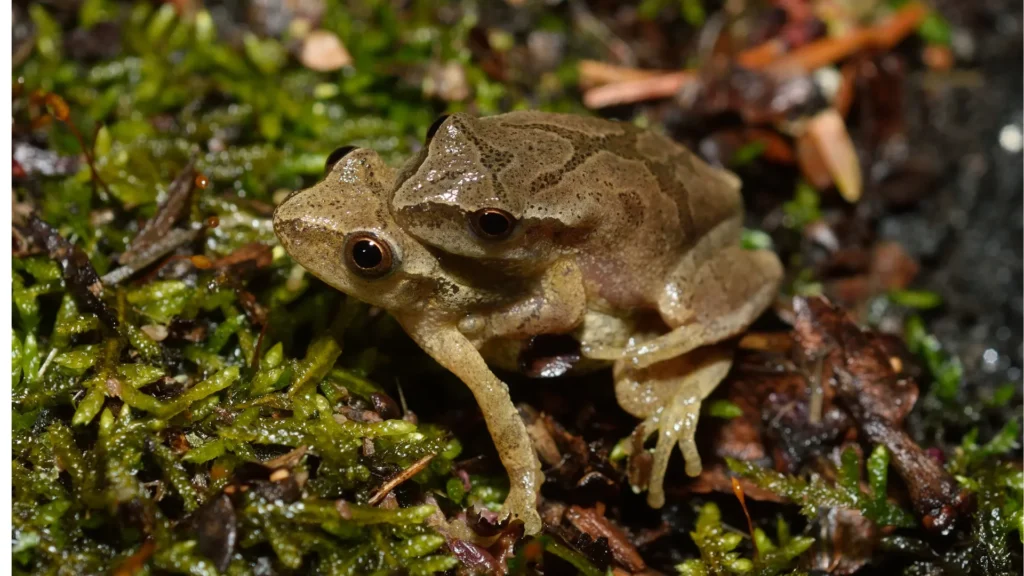
Adaptations for Survival
Spring Peepers have developed remarkable adaptations to survive extreme cold temperatures, allowing them to endure harsh winters in their native regions. One of their most unique survival mechanisms involves a process known as “freeze tolerance.” During the winter months, when temperatures plummet, parts of their body, including their blood, freeze solid. While this might be fatal to most animals, Spring Peepers have evolved to withstand this phenomenon.
The key to their survival lies in their liver, which produces large quantities of glucose during freezing conditions. This glucose acts as a natural antifreeze, preventing the ice crystals from forming in critical areas such as the heart and lungs. As a result, these vital organs remain unfrozen, ensuring that the frog can survive even when much of its body is crystallized. When temperatures rise and the environment warms, the Spring Peeper gradually thaws out and resumes its normal activities.
This extraordinary adaptation allows Spring Peepers to survive even in regions where winter temperatures can drop as low as -8°C, making them one of the few amphibians capable of enduring freezing conditions. Their ability to hibernate under tree bark or logs also offers protection from the cold, as it provides a more stable microenvironment where they can remain insulated from the worst of winter’s chill.
These survival tactics are a testament to the resilience and ingenuity of Spring Peepers, allowing them to thrive in environments that would otherwise be inhospitable to most amphibians.
Interesting Facts
Spring Peepers, despite being tree frogs, exhibit some unique behaviors that set them apart from other species in their family. Unlike most tree frogs, they rarely climb higher than knee level. This characteristic is surprising given their arboreal relatives’ tendency to climb higher into trees and shrubs. Instead, Spring Peepers prefer to stay closer to the ground in shrubs, grasses, and low branches, where they can easily blend into their surroundings with their excellent camouflage.
In certain regions, Spring Peepers are affectionately known by a variety of local names. In Canada and New Brunswick, they are commonly called “Tinkletoes,” a name likely inspired by their light, almost delicate calls that resemble the sound of tinkling bells. In Nova Scotia, they are known as “Pink-Winks,” and in Martha’s Vineyard, locals refer to them as “Pinkletinks.” These charming regional names highlight the endearing qualities of these frogs and their association with the arrival of spring.
Spring Peepers are also known for their hibernation habits. During the colder months, they seek shelter beneath tree logs, behind loose bark, or in other secluded spots where they can avoid the extreme cold. This behavior is essential for surviving harsh winters, as it provides them with insulation and protection from freezing temperatures.
Interestingly, only male Spring Peepers produce the distinctive high-pitched call that makes them so recognizable. These vocalizations serve a critical role during mating season, as males use their calls to attract females. The females are drawn to the calls, often selecting mates based on the strength and frequency of the sounds. These calls are loud and persistent, and they can be heard from a distance, filling the night air with a chorus of peeping sounds.
As nocturnal creatures, Spring Peepers are most active during the night. They emerge from their hiding spots as the sun sets and spend the evening foraging for food and calling out to potential mates. Their nocturnal lifestyle helps them avoid daytime predators and conserve energy, making them highly efficient in their search for food.
Spring Peepers Conservation Status
Spring Peepers are generally widespread across their range, and at present, they are not classified as endangered. Their adaptability to a variety of environments, including woodlands, swamps, and wetlands, has allowed them to maintain a stable population in many areas. However, while they are not currently at risk of extinction, their conservation status is becoming a growing concern due to human activities that are affecting their natural habitats.
One of the most significant threats to Spring Peepers is habitat destruction, particularly the loss of wetlands. Wetlands are essential for their survival, providing the ideal breeding grounds and places to find food. These amphibians rely on clean, shallow water for laying their eggs, and the loss of these areas due to urban development, pollution, and drainage of wetlands directly impacts their reproductive success and overall population numbers. The draining of wetlands for agricultural purposes or land development is a major contributor to habitat fragmentation, which can isolate populations and make it difficult for them to find mates or suitable areas to breed.
In some regions, such as Kansas and Iowa, Spring Peepers are classified as a threatened species. While these areas still support populations, the ongoing pressures from habitat loss, as well as climate change, pose significant risks. Changes in temperature, rainfall patterns, and the availability of wetlands can alter their habitats, further stressing local populations. In particular, warmer winters can disrupt their hibernation cycles, and the increased frequency of droughts can reduce the availability of breeding sites.
Conservation efforts aimed at protecting wetland habitats and reducing pollution are essential to ensuring the long-term survival of Spring Peepers. These frogs are an important part of the ecosystem, helping to control insect populations and contributing to the biodiversity of their habitats. By protecting their natural environment, we can ensure that Spring Peepers continue to be a vibrant and vital part of the ecosystems they inhabit.
Conclusion
Spring Peepers are small yet remarkably resilient amphibians that have become iconic symbols of the changing seasons. Their high-pitched calls, which echo through woodlands and wetlands, are a beloved sign of spring’s arrival, offering a unique auditory experience to those lucky enough to hear them. These tiny frogs play an important role in maintaining the balance of their ecosystems by controlling insect populations and serving as prey for larger animals, thus contributing to the health of their environment.
Beyond their vocalizations, Spring Peepers’ ability to survive extreme cold temperatures demonstrates their extraordinary adaptability. Their freeze tolerance, facilitated by glucose production that protects vital organs during the freezing months, is a fascinating adaptation that sets them apart from many other amphibians. This resilience allows them to thrive in environments with harsh winters, making them one of nature’s most impressive survivors.
However, despite their adaptability and broad range, Spring Peepers face significant threats from habitat loss, particularly the destruction of wetlands that are essential for their breeding and survival. While their populations remain stable in many areas, regions like Kansas and Iowa have seen declines, which highlights the need for focused conservation efforts. Protecting these vital ecosystems from further degradation is crucial to ensuring that Spring Peepers can continue to thrive and fulfill their ecological role.
In conclusion, while Spring Peepers are not currently endangered, proactive conservation efforts are necessary to safeguard their habitats from further harm. By preserving wetlands and reducing human impacts on their environment, we can help secure a future for these remarkable amphibians and maintain the biodiversity of the ecosystems they inhabit.
faq’s
1. What distinctive marking gives Spring Peepers their scientific name “crucifer”?
Spring Peepers have a dark “X” shape on their back, which inspired the Latin name “crucifer,” meaning “cross-bearer.”
2. How do male Spring Peepers produce their characteristic high-pitched call?
They use a vocal sac located near their throat, which inflates and deflates like a balloon to generate the peeping sound.
3. What is the lowest temperature Spring Peepers can survive?
They can endure temperatures as low as -8°C by producing glucose that acts as an antifreeze.
4. What key difference distinguishes the Northern and Southern Spring Peepers?
The Southern Spring Peeper (P.c. bartramania) has a distinctive dark marking on its belly, unlike the Northern Spring Peeper (P.c. crucifer).
5. What adaptation allows Spring Peepers to survive freezing temperatures?
Their liver produces glucose, which prevents ice formation in vital organs like the heart and lungs.
6. What are the primary prey items in the diet of adult Spring Peepers?
They primarily feed on small invertebrates such as ants, flies, beetles, and spiders.
7. How long does it take for Spring Peeper tadpoles to complete metamorphosis?
The larval stage lasts 45 to 100 days, depending on environmental factors.
8. Where do Spring Peepers typically hibernate during winter?
They hibernate under logs, loose tree bark, or in leaf litter to avoid freezing temperatures.
9. Why are Spring Peepers considered a threatened species in some regions?
Habitat loss, particularly the destruction of wetlands, has led to population declines in states like Kansas and Iowa.
10. What ecological role do Spring Peepers play in their environment?
They help control insect populations as predators and serve as prey for larger animals, maintaining the balance of their ecosystem.


